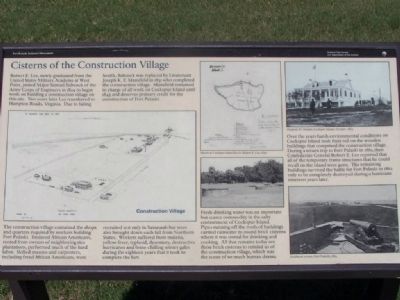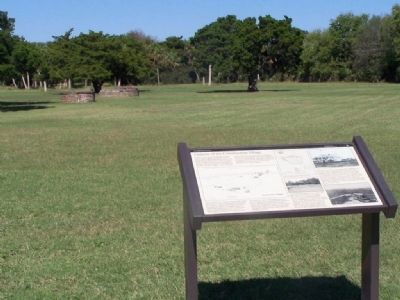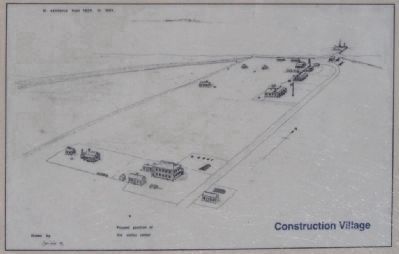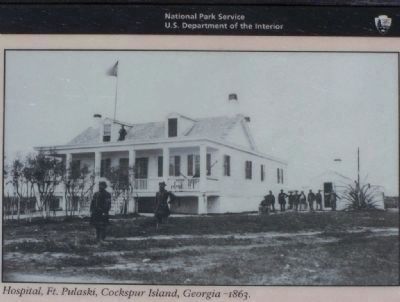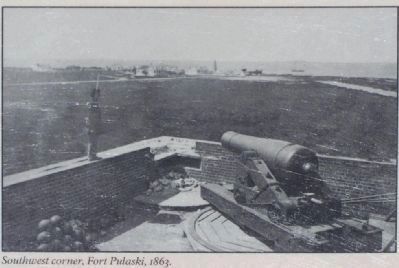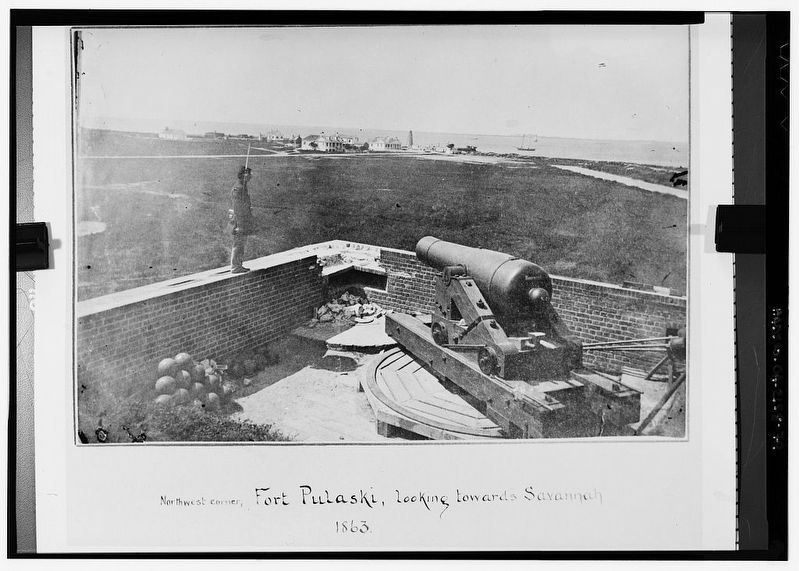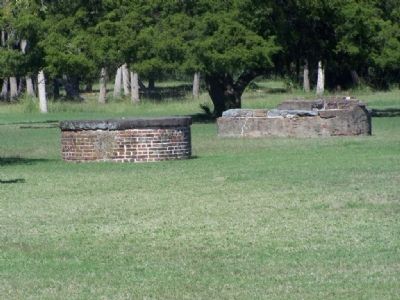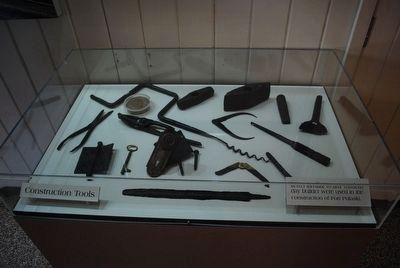Tybee Island in Chatham County, Georgia — The American South (South Atlantic)
Cisterns of the Construction Village
Fort Pulaski National Monument
Robert E. Lee, newly graduated from the United States Military Academy at West Point, joined Major Samuel Babcock of the Army Corps of Engineers in 1829 to begin work on building a construction village on this site. Two years later Lee transferred to Hampton Roads, Virginia. Due to failing health, Babcock was replaced by Lieutenant Joseph K.F. Mansfield in 1831 who completed the construction village. Mansfield remained in charge of all work on Cockspur Island until 1845 and deserves primary credit for the construction of Fort Pulaski.
The construction village contained the shops and quarters required by workers building Fort Pulaski. Enslaved African Americans, rented from owners of neighboring rice plantations, performed much of the hard labor. Skilled masons and carpenters, including freed African Americans, were recruited not only in Savannah but were also brought down each fall from Northern States. Workers suffered from malaria yellow fever, typhoid, dysentery, destructive hurricanes and bone-chilling winter gales during the eighteen years that it took to complete the fort.
Fresh drinking water was an important but scarce commodity in the salty environment of Cockspur Island. Pipes running off roofs of buildings carried rainwater to round brick cisterns where it was stored for drinking and cooking. All that remains today are these brick cisterns to remind us of the construction village, which was the scene of so much human drama.
Over the years harsh environmental conditions on Cockspur Island took their toll on the wooden buildings that comprised the construction village. During a return trip to Fort Pukaski in 1861, then Confederate General Robert E. Lee reported that all of the temporary frame structures that he could recall on the island were gone. The remaining buildings survived the battle for Fort Pulaski in 1862 only to be completely destroyed during a hurricane nineteen years later.
Erected by National Park Service, U.S. Department of the Interior.
Topics. This historical marker is listed in these topic lists: Forts and Castles • Military • War, US Civil. A significant historical year for this entry is 1829.
Location. 32° 1.646′ N, 80° 53.558′ W. Marker is on Tybee Island, Georgia, in Chatham County. Marker can be reached from Islands Expressway (U.S. 80), on the left when traveling east. Located At Fort Pulaski National Monument, near Visitor Center Parking lot. Touch for map. Marker is in this post office area: Tybee Island GA 31328, United States of America. Touch for directions.
Other nearby markers. At least 8 other markers are within walking distance of this marker. The Waving Girl (here, next to this marker); A Bustling Village (a
few steps from this marker); Cockspur Island Lighthouse (a few steps from this marker); History of Emancipation: (a few steps from this marker); Soldier of Liberty (within shouting distance of this marker); Sheltering Crown (within shouting distance of this marker); Freedom Ahead! (within shouting distance of this marker); John Wesley (within shouting distance of this marker). Touch for a list and map of all markers in Tybee Island.
More about this marker. On the left is a drawing of the construction village, showing the locations of several buildings. In the upper center is a Sketch of Cockspur Island by Lt. Robert E. Lee, 1830. Below it is a photo of the cisterns as they look today. On the right is a photo of the Hospital, Ft Pukaski, Cockspur Island, Georgia_1863. Blow it is a photo of the
Southwest corner, Fort Pulaski, 1863.
Also see . . . Fort Pulaski. National Park Service (Submitted on November 1, 2008, by Mike Stroud of Bluffton, South Carolina.)
Credits. This page was last revised on May 3, 2020. It was originally submitted on November 1, 2008, by Mike Stroud of Bluffton, South Carolina. This page has been viewed 1,565 times since then and 24 times this year. Photos: 1, 2, 3, 4, 5. submitted on November 1, 2008, by Mike Stroud of Bluffton, South Carolina. 6. submitted on May 3, 2020, by J. Makali Bruton of Accra, Ghana. 7. submitted on November 1, 2008, by Mike Stroud of Bluffton, South Carolina. 8. submitted on September 27, 2015, by Brandon Fletcher of Chattanooga, Tennessee. • Craig Swain was the editor who published this page.
